A Black man was hanged, then a group of white people burned his body by a US roadside. His family want police and prosecutors to acknowledge race was a factor, but they still deny it
- This story was supported by the Pulitzer Center
This article contains descriptions of racial violence.
It definitely was a lynching. It definitely wasn’t a lynching.
Smoke from the fire surged into the clear sky. Giant gray puffs were spiraling out of the ditch, but discerning their source was impossible from afar in the late-afternoon hours.
Destiny Andersen and her brother were driving on a nearby bridge when they saw it. Destiny, just over 20 years old, walked to the ditch and thought she saw a human body amid the flames. They called their mother, who figured a cow carcass was being burned. They weren’t too concerned but their mother mentioned it in a phone call to Nancy, Destiny’s grandmother.
Nancy knew that in this part of Jasper county, in rural central Iowa, nobody owns cows any more. The partial drought of September 2020 made fires particularly dangerous.
After supper, she and her husband drove the quarter-mile to the bridge. “I took a few minutes looking at it and figured out that it was a human being and not an animal,” she recalls. She hoped it was some twisted practical joke but called 911.
A deputy sheriff arrived at the scene and handed first responders a fire extinguisher. The flames withered. In front of them were the charred remnants of a human body.
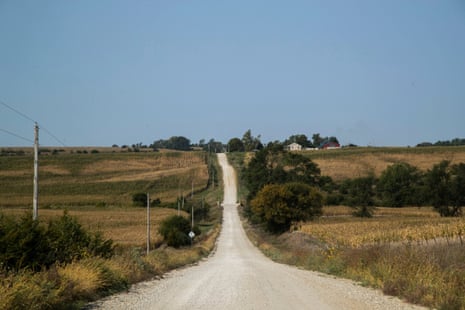
Authorities swiftly called the death a homicide. The victim was 44-year-old Michael Williams, who lived in nearby Grinnell.
Days later, law enforcement agencies announced they had arrested and charged a 31-year-old army veteran, Steven Vogel, with murder. Williams had been strangled, according to the medical examiner’s office. Authorities arrested and charged three others with helping Vogel move the body.
The case attracted national attention. Michael Williams was Black, and his body was burned and dumped in an almost-exclusively white part of Iowa. The four people arrested were white. These events occurred 15 weeks after Minneapolis police publicly murdered George Floyd, and massive civil rights protests were under way nationwide.
And yet, law enforcement immediately declared that no evidence suggested the murder had been motivated by racism.
Williams’s family and other members of central Iowa’s Black community weren’t convinced. The simple fact a white man hanged a Black man with a rope and then set him on fire in an easily visible spot – with three other white people helping cover up the murder – was telling.
Data analyzed by the Guardian reveals this to be common: victims’ loved ones clearly see racist motives, while law agencies often don’t.
The life of Michael’s father, James Byrd-Williams Sr, has been punctuated by tragedies steeped in racism. But he knows he’s not alone. “We’re Black people, we know what lynchings are,” he says. “We’re the ones getting lynched.”
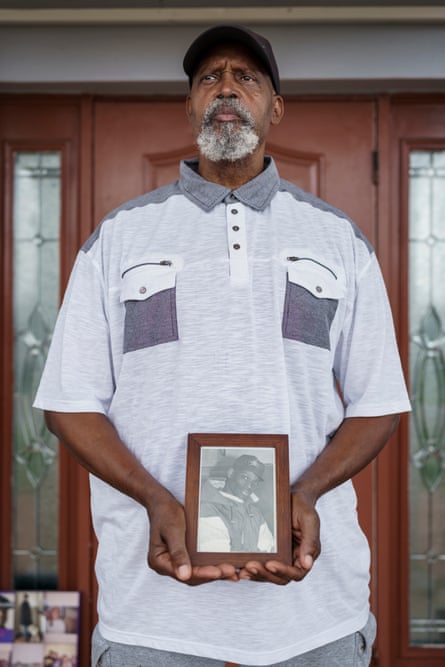
People who knew Michael Williams remember his infectious laugh and his fun-loving, loyal personality. His skills in Dungeons and Dragons were legendary, and he was known to break into songs and dances to entertain his co-workers.
He was a loving father and grandfather who went to great lengths to care for his extended family. On the day he died, he had called his cousin to check in – they had talked about his back pain.
He believed in reinventing himself, and he had moved on his own from his native Syracuse to Nebraska when he was about 19 before settling in Iowa in 2008. He talked about going back to school to become a nurse.
But Williams also had his troubles. His diabetes had made working in fast food too painful, so he wasn’t working. He was among the handful of Black people in Grinnell, a town of 9,500 that is more than 90% white. That’s where he met Steve Vogel and Crystal Cavegn, a white couple Williams became friendly with; the three of them sometimes used recreational drugs together.
Vogel lived in the basement of his mother’s home. Records show he had been convicted of numerous crimes over the years, including burglary and assault. Cavegn, 23, was a former fast-food worker with a history of mental illness, according to her Facebook pages. In the preceding few years, she had overdosed, been homeless and gotten arrested for public intoxication and assault.
Both frequently posted on Facebook about their troubled relationship, which began in 2018. They soon got engaged and moved in together, but Vogel repeatedly hinted at being betrayed by Cavegn and he described himself as separated. Nevertheless, he continued to profess his love for her. According to Vogel’s former friend Nathaniel Haines’s later court testimony, Cavegn decided to enter rehab at some point, probably in the summer of 2020. But, according to prosecutors, Vogel was concerned that Cavegn was cheating on him with Williams.
On 12 September, Vogel invited Williams to smoke marijuana at his parents’ house, a mere block from the Grinnell police department. The pair headed towards the basement, which was unfinished and had concrete walls and floors, with some carpet laid out. Near the stairs was a single window covered with a wooden door.
Vogel suddenly hit Williams in the back of a head with a baseball bat repeatedly, according to prosecutors. He then tied a rope around Williams’s neck and threw it around the basement rafters until Williams, begging for his life, stopped moving.
Not long after, Vogel called his friend Cody Johnson to help him move “Black Mike”, as he called him. (Johnson says that Vogel threatened to hurt him if he didn’t cooperate.) They moved Williams’s body from the basement floor to underneath a nearby futon bed. But Johnson says he refused to help any further and left.
Vogel then called on a friend named Nathaniel Haines to join him. They made some pizza rolls and headed to the basement, where Williams lay lifeless on the ground wrapped in plastic in a bed frame under Vogel’s air mattress. Vogel showed Williams’s body to Haines, confessed to killing him, and asked for help in disposing of the corpse. Haines was hesitant, so they ate the rest of the pizza rolls, smoked some wax and passed out. After waking up, Haines left.
Next, Vogel solicited the help of his mother, Julia Cox, and her boyfriend, Roy Garner. They loaded the body into Garner’s green Dodge truck and they drove to the ditch, which is next to a fairly busy country road, surrounded by open fields and farmland. They were seen by a passerby.
One of them poured an accelerant on Williams’s body and set him on fire.
Garner then dropped Vogel off at his sister’s, where he told her he had killed someone. Garner and Cox proceeded to dump supplies – rope, carpet, bleach bottles, rubber gloves and a receipt with Vogel’s name on it – at a rural spot, where they were again spotted by a witness.
The whole process was sloppy – as if they couldn’t imagine getting caught.
“They really took a chance in the middle of the day,” says Nancy Andersen, the grandmother who called 911. Had Vogel and his family just left Williams’s body without setting it on fire, it might never have been found.
Soon, social media was abuzz with rumors concerning Williams’s murder, who had done it, and why. Law enforcement officers interviewed 77 people. Cox and Garner soon confessed to their roles in covering up Vogel’s murder, as did Cody Johnson.
Within a single week, with determination and competence, the more than 50 law enforcement members who worked on the case had opened and closed a brutal murder case.
So it seemed, anyway.
From the outset, authorities rejected a racial motive. “They never pursued it,” says Paula Terrell, Williams’s aunt. “They just kept saying ‘it’s a love triangle.’”
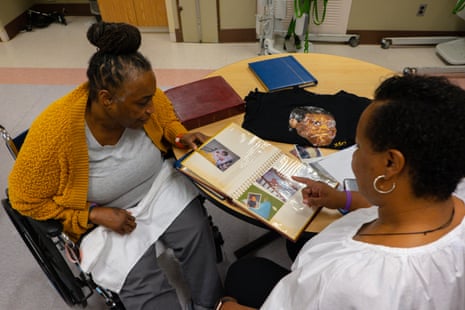
At the press conference held six days after Williams’s body was discovered, law enforcement swiftly stamped out any flickering concerns about racial motives. Adam DeCamp, special agent in charge at the Iowa department of public safety, said that the investigation hadn’t been completed but hastened to declare that race was immaterial to the crime.
Dennis Reilly, Grinnell’s chief of police, spoke next. “This terrible act is not representative of, nor does it reflect upon, the welcoming community that Grinnell is,” he said.
The next day’s headline in the Des Moines Register read, “Four charged in slaying of Grinnell man remembered as gentle, loving; no racial motive seen.”
In fact, Williams’s murder was one of several incidents in central Iowa that targeted Black people in short sequence. Months before Williams was killed, two white men allegedly assaulted 22-year-old DarQuan Jones in Des Moines, breaking bones in his face and wrist as they hurled racial slurs at him. In August 2020, Stephanie Hinton said she was pulled from her car in Des Moines, attacked and robbed by multiple white men hissing racist insults.
After Williams’s death, the Des Moines Black Lives Matter chapter declared a state of emergency in Iowa. The organization suggested Black Iowans travel in parties of two or more; avoid traveling at night; and be prepared to escape, hide or defend themselves in worst-case scenarios.
“Especially in rural Iowa, ‘sundown towns’ are a real thing here,” says the activist Jaylen Cavil, using a term referring to all-white communities that are dangerous for Black people.
Janalee Boldt, Williams’s ex-wife, a white woman with whom he had three children, has no doubt about the nature of the murder. “He was hung – that’s called lynching,” she says.
She noted that the killing happened “over a woman – a white woman”, referring to the history of lynchings involving white mobs that perceived Black men as sexually transgressing.
In Grinnell, she says, her biracial children were sometimes subjected to racism in the virtually all-white town. During the vigil for Williams put on by Grinnell College, someone conspicuously drove by with a Confederate flag.
Boldt thinks that Cavegn left Vogel for several other men before she had her alleged affair with Williams, but that those relationships hadn’t inspired Vogel to murder. “They’re white, and they’re still alive.”
James Byrd-Williams, Michael’s father, was a deputy sheriff in upstate New York for 10 years. That’s one reason he rejects authorities’ claims about his son’s murder resulting from colorblind passions. “They can’t fool me because I know how they investigate stuff,” he says.
At 6ft 8in and with a professional wrestler’s build, he looked imposing when he confronted the man who killed his son and disposed of the body in Jasper county.
He asked the court to record Vogel’s good fortune that he was resisting the urge to jump over the table, leap across the room and snap his son’s killer’s neck.
“I could do it, and nothing in here could stop me,” he said. “That’s a fact.”
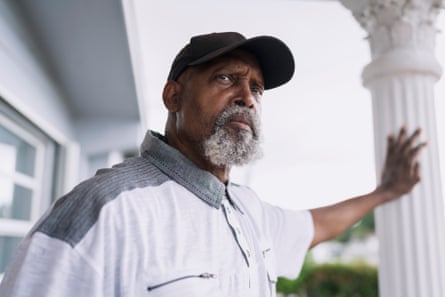
Byrd-Williams saw Vogel through the prism of other events in his life. That day in court, he talked about something that happened decades earlier to his relative in a Texas county also named Jasper.
“I had a cousin murdered in Jasper City right there in Texas 22 years ago by two, three white boys,” he told Vogel and the court. “Jasper and Jasper. Two Jaspers in my life. He knew them too, just like you knew my son. But he was torn apart and drug behind a truck, and he was alive when they did that to him.”
While walking home from a family gathering in June 1998, 49-year-old James Byrd Jr took a ride from three white men, one of whom he recognized. Within 30 minutes, the three white supremacists took Byrd to an isolated spot, beat him badly, covered his face with black spray paint, chained his ankles to the back of a pickup truck, and dragged him down a road, decapitating him.
Two family members. Two different states. Both killed by white people.
After the 1998 murder, Texas’s then-governor, George W Bush, opposed a hate crimes law proposed in response, saying the sentences handed to Byrd’s three killers were punishment enough. Two of them were executed, one given life in prison.
Bush’s successor signed a law that strengthened penalties for crimes motivated by bigotry, and in 2009, Congress passed a law named partly for James Byrd that gave the federal government broader abilities to prosecute hate crimes.
In 2017, Dylann Roof, the young white supremacist who was convicted of shooting to death nine Black people in a South Carolina church, became the first person to face the death penalty under the Matthew Shepard and James Byrd Jr Hate Crimes Prevention Act.
The first legislation targeting hate crimes in the US was arguably the Civil Rights Act, passed in 1871 after the Ku Klux Klan and other white supremacist organizations terrorized Black Americans following the civil war.
Under President Ulysses S Grant the law was used to prosecute and fine Klansmen, but the act’s use declined as Reconstruction was deconstructed. It was an early lesson: legislation is only as good as its enforcement. According to the Equal Justice Initiative, there were more than 4,400 lynchings between Reconstruction and 1950. The Civil Rights Act of 1968 allowed for the prosecution of anyone injuring or intimidating another person based on the victim’s race, color, religion or national origin.
“The classic Tuskegee definition of lynching agreed by anti-lynching activists in 1940 is that a lynching involves an illegal killing by three or more persons in service to ‘justice, race, or tradition’,” says the John Jay College of Criminal Justice historian Michael Pfeifer, the author of several books on the subject. “What is called a hate crime today – language that dates to the 1980s and 90s – was sometimes in earlier eras called a lynching.”
Federal laws subsequently added sexual orientation and gender identity to this list of protected classes, and strengthened penalties for violations. In addition, 46 states and the District of Colombia have their own hate crime laws.
A hate crime can be perpetrated by just one or two people, while lynching was usually understood as a more collective act. But while some lynchings involved hundreds of people, some were done by small mobs.
By these definitions, lynching is alive and well in the US. In March, a white man and a white woman allegedly shot and killed a Black man at a California gas station and have been charged with a hate crime. In February 2020, three white men were captured on video chasing down Ahmaud Arbery in trucks and shooting him to death; all three were found guilty of hate crimes and murder. In Mississippi alone, there have been at least eight lynchings of Black people since 2000, according to one analysis by Julian, a civil rights organization.
Joe Biden recently signed into law an anti-lynching bill, named after Emmett Till, the 14-year-old boy kidnapped and murdered in 1955 in Mississippi for allegedly whistling at or flirting with a white woman.
Iowa’s laws don’t list murder as a hate crime, however. Some activists believe that Till’s murderers would be guilty of a hate crime for assaulting him and violating his civil rights but the murder itself would not count as one. For this reason, there need to be more and better laws on the books.
James Byrd-Williams was cautiously optimistic when Steven Vogel’s trial commenced in November 2021. He knew the evidence was overwhelming.
The county attorney, Bart Klaver, outlined a simple case: Vogel was dating Cavegn and “began getting concerned that Michael Williams was interfering with that relationship, and it bothered him”, he said. This approach focused on the crime itself and sidestepped any discussions of racism that might have made an all-white jury uncomfortable.
Klaver called Steven’s sister to the stand, as well as Cody Johnson, the friend who moved Williams’s body across the room of Vogel’s basement, and Nathan Haines, the friend who Vogel also asked for help. All three said that Vogel had confessed to them.
Vogel’s lawyers argued that Vogel killed Williams spontaneously, perhaps in self-defense, rather than with foresight. They didn’t call a single witness, and he never took the stand.
After less than four hours, the jury found Vogel guilty on all counts. The judge sentenced him to a life sentence without chance of parole.
After pleading guilty for their parts in the crimes, his mother, Julia Cox, was sentenced to seven years in prison, and her partner, Roy Garner, to nine. Cody Johnson pleaded guilty to accessory after the fact and was sentenced to two years in prison after a judge rejected an earlier plea deal that had allowed him to avoid jail time.
For the Williams family, a sense of unfairness prevails. They say authorities neglected them during parts of the investigation, some court proceedings and Cody’s plea deals.
Paula Tyrell, Michael’s aunt, is particularly troubled that the eyewitness who spotted Garner’s truck testified in court that she saw a second silver truck carrying a fourth person, but only three people were charged with disposing of the body at the spot. The identity of the silver truck’s owner is a mystery. (Capt Dan Johnson of the Grinnell police department referred questions concerning the case to prosecutors, who didn’t respond to the Guardian’s requests for comments.)
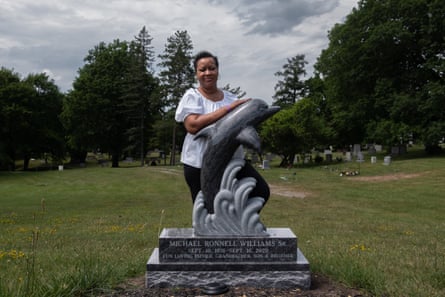
Tyrell is also disturbed that authorities didn’t initially inform her family that Capt Johnson is Cody Johnson’s cousin. “He is the lead detective and he did not recuse himself from a case involving a family member,” she said in an email. Capt Johnson told the Guardian that he wasn’t involved in investigating Cody, but he testified in court that he was “co-lead investigator” in the Williams case.
More broadly, Williams’s family, and other members of Iowa’s Black community, argue that partial justice is no justice at all.
When officials decline to file hate crimes charges in appropriate cases, they mislead and endanger communities, says Luana Nelson-Brown, executive director of the Iowa Coalition for Collective Change. “If we don’t talk about the racial implications in a crime, we don’t give the community a chance to employ their own safety mechanisms,” she says.
Immediately after Vogel’s conviction, Scott Brown, assistant Iowa attorney general, told reporters the evidence suggested that Williams was killed over Cavegn (he didn’t respond to numerous requests for comment).
Special Agent DeCamp told the Guardian, “that’s still my belief based on the information as I know it.”
But Byrd-Williams argues that the particular disrespect that Vogel showed to Williams, by hanging him with a rope and burning him in a noticeable area, illustrated a race-based hatred. He is pushing for Iowa to stiffen its hate crime penalties – and he wants the legislation named after his son. He also wants the federal government to bring hate crime charges.
“I want his name to always be remembered in Grinnell, that he was murdered and his body was destroyed and burned in a ditch,” he says.
For Byrd-Williams, Michael’s murder compounds the pain of his cousin James Byrd’s killing.
And then there was Terry Maddox. He was another of Byrd-Williams’s sons, and Michael’s half-brother.
“He was shot in the back by a Syracuse police officer,” Byrd-Williams says.
In 2016, Maddox was attending a party in central New York when someone complained to authorities about the noise. Police and the district attorney said Maddox, 41, was firing a gun when Kelsey Francemone, a 22-year-old rookie white police officer, arrived at the party and ordered him to put it down. Maddox instead turned toward Francemone and kept firing, she later said. She returned fire and killed him.
Officials said the shooting was justified and Maddox had gun residue on his hands. No gun was ever found, however. A grand jury declined to press charges against Francemone, whose actions were lauded by state and county authorities. Seven individuals pleaded guilty to rioting, but six others charged with similar crimes decided to go to trial. All were acquitted.
The next year, Kathy Hochul, now the New York governor, honored Francemone as the state’s officer of the year.
Byrd-Williams feels differently. “My son was murdered,” he says.
Maddox left behind five children and a pregnant fiancee. He died 18 years after James Byrd and four years before Michael Williams.
Three family members. Three different states. All killed by white people.
If confirmed as a hate crime, Michael Williams’s murder would count as one of the nearly 2,900 anti-Black incidents reported in the US in 2020, a 49% increase over the year prior.
Virtually all experts believe this drastically understates the number of hate crimes, as the Guardian’s analysis shows.
“Is the hate crime data underreported? Absolutely,” says Michael Lieberman, a lawyer at the Southern Poverty Law Center (SPLC).
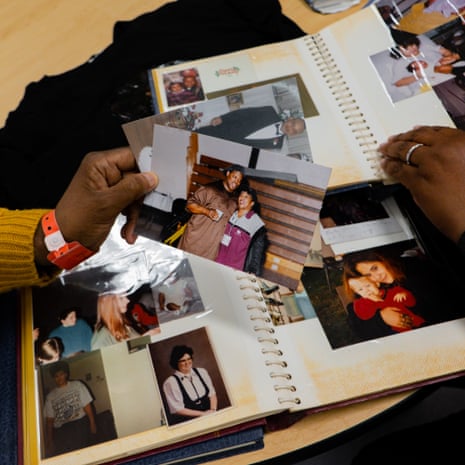
Although the FBI collects data on hate crimes, cities and police departments are not mandated to hand over any information about these crimes. Consequently, most local law enforcement agencies – about 80% – declined to share any information about hate crimes with the FBI in 2020, according to justice department numbers. And those that participated weren’t always thorough: many cities reported not a single hate crime, according to the SPLC.
“If you live in a big city where they haven’t reported a [hate] crime in a few years,” Lieberman says, “why would you call the police and report it? You have no expectation they’re either ready, willing or able to do anything about it.”
Even worse, of the approximately 200,000 incidents a year reported in the Bureau of Justice Statistics’ National Crime Victimization Survey, US attorneys investigated fewer than 0.1%. Those rarely lead to prosecutions, which is why just 0.001% of the hate crimes Americans say they experience annually are prosecuted, according to the Guardian’s analysis of federal data.
The justice department’s own data show that it declined to prosecute an astounding 82% of hate crimes investigated between 2005 and 2019.
In May 2021, the attorney general, Merrick Garland, announced steps the department would take to improve its record. Prosecutors and other officials regularly cite the difficulty of convincing judges and juries that incidents are motivated by bigotry. Some experts say that proving a motive of hatred is difficult.
But prosecutors are hesitant because they are risk-averse, says former federal prosecutor Shanlon Wu. “They want slam-dunk cases,” he says. But in reality, proving hate is no harder than proving other criminal intent. Instead, refraining from bringing such cases means prosecutors fail to develop skills to persuade juries. “It’s sort of a self-fulfilling prophecy,” he says.
Williams’s father was dismayed that prosecutors refused to charge Vogel with hate crimes.
Here is his truth: the decision to forgo hate crime charges in Michael’s case is only the latest example of the bigotry that has imposed itself on his world. It’s a form of racism he believes will never be absent from this life.
“The law is not made for Black people,” Byrd-Williams says.
American racism has disfigured Byrd-Williams’s life too forcefully for him to trust it can ever be eradicated. But he believes robust and well-enforced hate crimes laws can honor the victims of hatred. For that to happen, however, authorities must stop insisting certain actions are colorblind when traces of color are present.
Men like Byrd-Williams know that where there’s smoke, there’s usually fire – and sometimes, in that fire, lies a man killed for being Black.
This story was supported by the Pulitzer Center